Unveiling the Secrets of the Tomb of Tibetan Kings: A Traveler’s Guide
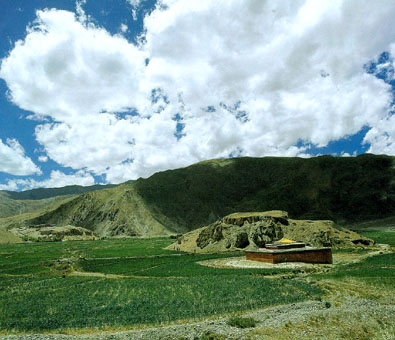
An Essential Guide to Visiting Tomb Of Tibetan Kings
Nestled in the enchanting landscapes of Tibet, the Tomb of the Tibetan Kings stands as a testament to the region’s rich history and vibrant culture. This remarkable site, located southwest of Dzong Hill in Qonggyai County, offers an extraordinary glimpse into the lives of the ancient rulers who once governed this mystical land. The tombs, believed to date back to the Tubo period, encompass a vast area of 3 million square meters, where the echoes of bygone eras resonate through the air.
As you approach the site, you’ll be captivated by the sight of numerous majestic tombs resembling hills, their earthy layers shaped by centuries of weathering. Here lies the final resting place of not only the revered Tsampos but also their wives and officials, each mound telling a story of power, legacy, and the spiritual beliefs of the Tibetan people. The most notable of these is the tomb of Zhigung Tsampo, surrounded by legends of divine descent and celestial missions.
Visiting the Tomb of the Tibetan Kings is more than just a stroll through ancient graves; it is an immersive journey into the heart of Tibetan culture, where the past and present intertwine. Prepare to be inspired by the artistry of stone sculptures, the grandeur of the tombs, and the breathtaking natural beauty that envelops this historic site. Whether you are a history enthusiast, a spiritual seeker, or simply a curious traveler, this destination promises to leave an indelible mark on your soul.
In This Guide
- An Essential Guide to Visiting Tomb Of Tibetan Kings
- The Rich History and Legends of Tomb Of Tibetan Kings
- Main Highlights: What You Absolutely Can’t Miss
- Planning Your Visit: A Practical Guide
- Tickets: Prices, Booking, and Tips
- How to Get There: A Complete Transportation Guide
- Local Cuisine and Accommodation Nearby
- Frequently Asked Questions
- Final Thoughts on Your Trip
The Rich History and Legends of Tomb Of Tibetan Kings
The Tomb of Tibetan Kings, located southwest of Dzong Hill in Qonggyai County, Shannan Prefecture, is a remarkable testament to the rich history and cultural heritage of Tibet. This monumental site, which encompasses a vast area of about 3 million square meters, comprises numerous tombs dedicated not only to the kings but also to their queens and high-ranking officials. With origins that trace back to the Tubo period and possibly even earlier, the tombs provide a captivating glimpse into Tibet’s ancient civilization.
One of the most significant figures associated with these tombs is Zhigung Tsampo, the first of the Tibetan kings. According to local legends, he was preceded by seven divine figures who descended from the heavens to fulfill specific missions on Earth. This mythical narrative suggests that these earlier kings were celestial beings who, after completing their tasks, ascended back into the sky via a “rope of light.” Zhigung Tsampo, however, marked the transition to a lineage that would permanently inhabit the earthly realm.
The tombs themselves are architecturally fascinating, built with layers of rammed earth that have eroded over centuries, transforming them into rounded mounds that resemble small hills. The tallest of these tombs stands at an impressive height of 14.7 meters and is surrounded by intricately carved stone lions, which are thought to have been influenced by the stone sculptures of the Tang Dynasty.
Among the 21 documented tombs, only 11 have been confirmed through archaeological surveys, revealing a complexity and depth of history that intrigues visitors. The construction of these tombs reflects the artistry and engineering of the time, showcasing how ancient Tibetans honored their leaders and commemorated their legacies.
Visiting the Tomb of Tibetan Kings is more than just a journey through ancient burial sites; it is an exploration of the beliefs, traditions, and historical narratives that shaped Tibetan culture. As travelers wander through the site, they are enveloped in an atmosphere steeped in legend and history, making it a profound experience that connects them to the timeless stories of the Tibetan people.
For those wishing to delve deeper into this enchanting history, the surrounding region offers additional insights into Tibetan heritage, including monasteries and natural landmarks that have their own stories to tell. Embrace the allure of this mystical land and let the echoes of its past enrich your travel experience.
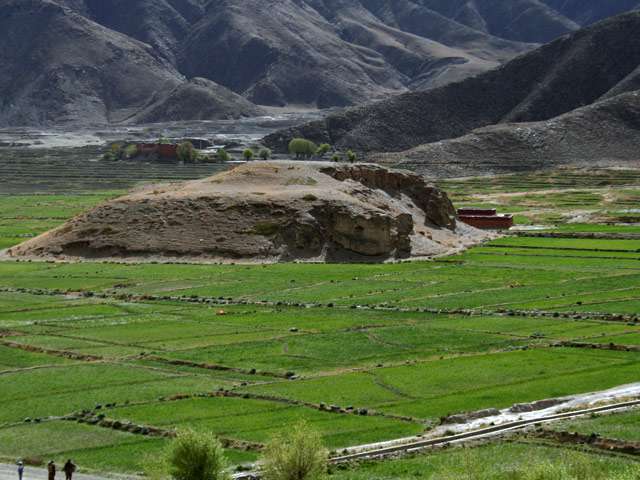
Tomb Of Tibetan Kings.
Main Highlights: What You Absolutely Can’t Miss
Visiting the Tomb of Tibetan Kings is an unforgettable journey into the heart of Tibetan history and culture. Nestled in the serene landscape of Qonggyai County, these ancient mausoleums offer a deep connection to the legends and traditions of the Tibetan people. Here are the must-see highlights that you absolutely can’t miss during your visit:
The Majestic Tombs
The Tomb of Tibetan Kings comprises a stunning collection of 21 tombs, spread over a vast area of 3 million square meters. As you approach, the sight of these imposing structures, resembling small hills, is breathtaking. Each tomb, originally designed as cubic shapes, has evolved over centuries into rounded forms, with layers of rammed earth exposed to the elements.
The Tomb of Zhigung Tsampo
Begin your exploration at the tomb of Zhigung Tsampo, the earliest and perhaps the most significant of the kings. Legends tell of the seven Tsampos before him, believed to be gods who descended to earth on a rope of light. This tomb is not just a burial site; it symbolizes the divine connection of Tibetan royalty to the realm of the gods.
Architectural Wonders
Marvel at the architectural features of the tombs. The highest mausoleum stands at an impressive 14.7 meters and has a square base measuring 180 meters on each side. In front of it, two magnificent stone lions, intricately carved from a single rock, serve as guardians, their expressions capturing the spirit of Tibetan artistry.
A Journey Through History
As you wander among the tombs, take a moment to immerse yourself in the rich history that surrounds you. Each burial site tells a story, revealing the beliefs and traditions of the Tibetan people. The layout, the stone carvings, and the legends associated with each tomb provide a profound insight into ancient Tibetan civilization.
Scenic Views
The tombs are set against a stunning backdrop of rolling hills, providing an ideal setting for photography enthusiasts. The best time for photographs is during sunset when the warm hues of the setting sun cast a magical glow over the landscape. Don’t forget to capture this picturesque scene!
Accessibility and Visitor Information
The Tombs of Tibetan Kings are located about 30 kilometers south of Shannan City, making them easily accessible by car or taxi. The site is open from 9:00 AM to 6:00 PM, and the admission fee is CNY 40. The ideal time to visit is between June and August when the weather is warm and pleasant.
Nearby Attractions
After exploring the tombs, consider visiting nearby attractions such as the Samding Monastery, the Riduo Hot Spring, and the Mindroling Monastery. Each location offers unique glimpses into Tibetan culture and spirituality, enriching your travel experience.
With their grandeur and historical significance, the Tomb of Tibetan Kings is a destination that promises to leave a lasting impression. Whether you are a history buff, a photography enthusiast, or simply seeking spiritual enrichment, these tombs are a must-visit on your Tibetan adventure.
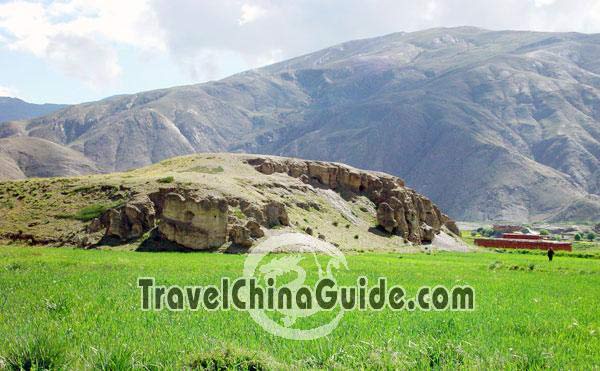
Tomb Of Tibetan Kings.
Planning Your Visit: A Practical Guide
When planning your visit to the Tomb of Tibetan Kings, you’re about to embark on a journey steeped in ancient history and breathtaking landscapes. Here’s a comprehensive guide to help you navigate this fascinating site and ensure a memorable experience.
Location and Getting There
The Tomb of Tibetan Kings is situated southwest of Dzong Hill in Qonggyai County, within Shannan Prefecture, approximately 30 kilometers south of Shannan City. The most common way to reach the tombs is by taking a taxi, which will take around 40 minutes. The fare is typically reasonable and offers a direct route to this historical site.
Opening Hours and Admission
The tombs are open daily from 9:00 AM to 6:00 PM, allowing ample time for exploration. The admission fee is CNY 40, which grants you access to this significant cultural landmark. Be sure to keep your ticket, as it may be required for re-entry or to visit specific areas within the site.
Best Time to Visit
For the most pleasant weather, plan your visit between June and August. These months offer warm temperatures and significantly less rain, making your exploration of the tombs comfortable and enjoyable. However, be prepared for the high altitude and fluctuating weather conditions typical of Tibet.
What to Expect
As you wander through the expansive area of the Tombs of Tibetan Kings, which covers approximately 3 million square meters, you’ll encounter a series of impressive burial mounds. The tombs, believed to date back to the Tubo period, are characterized by their unique rammed earth construction, which has formed gentle hills over centuries of rain and wind.
The most notable tomb belongs to Zhigung Tsampo, with legends suggesting this king was among the first to rule. The tombs are adorned with stone lions and intricate carvings that reflect the artistry of the era. It’s also a place where you can contemplate the rich history of the Tibetan kings and their significant contributions to Tibetan culture.
Tips for Your Visit
- Transportation: If you decide to rent a car, discuss with your driver how long you would like to spend at the tombs to ensure they are available when you’re ready to leave.
- Photography: The tombs are set against a stunning natural backdrop, making it an ideal spot for photography. Capture the beauty of the landscape, especially during sunrise or sunset when the light creates a magical atmosphere.
- Guided Tours: Consider joining a guided tour to gain deeper insights into the history and significance of the site. Knowledgeable guides can share fascinating stories that will enrich your experience.
Nearby Attractions
After exploring the Tomb of Tibetan Kings, you may wish to visit other nearby sites to enhance your cultural journey:
– Samding Monastery: An important spiritual site offering serene views and a glimpse into Tibetan Buddhism.
– Riduo Hot Spring: Perfect for relaxation after a day of exploration.
– Mindroling Monastery: Known for its beautiful architecture and peaceful environment.
– Dratang Monastery: Another stunning site that reflects the rich religious heritage of Tibet.
Conclusion
Visiting the Tomb of Tibetan Kings is not just a historical expedition; it’s an opportunity to connect with the essence of Tibetan culture and history. With this practical guide, you’re well-equipped to make the most of your visit. Enjoy your journey through time at this majestic site, and immerse yourself in the stories of the past that continue to shape the Tibetan identity today.
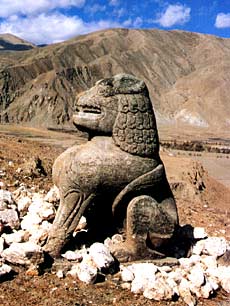
Tomb Of Tibetan Kings.
Tickets: Prices, Booking, and Tips
When planning your visit to the Tomb of Tibetan Kings, it’s essential to be well-informed about ticket prices, booking options, and helpful tips to enhance your experience.
Admission Fees
The entry fee to the Tomb of Tibetan Kings is CNY 40 (approximately USD 6). This nominal fee grants you access to explore these historical mausoleums, where the ancient rulers of Tibet rest in peace.
Booking Tickets
Tickets can typically be purchased on-site at the entrance of the tombs. However, during peak tourist seasons (June to August), it’s advisable to arrive early to avoid long lines and ensure your visit goes smoothly. For those traveling as part of a guided tour, your tickets may be included in the tour package, so be sure to confirm this with your travel organizer.
Transportation Tips
The Tomb of Tibetan Kings is located about 30 kilometers south of Shannan City. You have a few options for getting there:
-
By Car: Renting a vehicle is a convenient option. If you choose this route, communicate with your driver about how long you plan to stay at the tombs to avoid any timing issues. Transportation costs typically range from CNY 150 to 200 for a round trip.
-
By Taxi: Taxis are available for hire and can accommodate up to four passengers. This option is convenient if you prefer a direct and hassle-free journey, but be sure to negotiate the fare beforehand.
-
By Bus: For budget travelers, a bus from Zedang (Shannan) is an economical choice, costing around CNY 10 for a round trip.
Best Time to Visit
The ideal time to visit the tombs is during the summer months, specifically from June to August. This period offers warm temperatures and minimal rainfall, allowing you to enjoy your explorations comfortably.
Final Tips
- Photography: Don’t forget your camera! The picturesque setting of the tombs, especially during sunset, provides stunning photographic opportunities.
- Plan Ahead: Consider researching nearby attractions such as Samding Monastery and Riduo Hot Spring to enrich your itinerary.
- Cultural Respect: As you explore these historic sites, remember to observe local customs and treat the area with respect, as it holds great cultural significance.
With these details in mind, you’re all set to embark on a journey through the rich history of the Tibetan Kings at their monumental resting place. Enjoy your visit!
How to Get There: A Complete Transportation Guide
To embark on your journey to the Tomb of the Tibetan Kings, a site steeped in history and cultural significance, you’ll find that accessing this remarkable destination is both convenient and straightforward. Here’s a comprehensive guide to help you navigate your way there.
Getting to the Tomb of the Tibetan Kings
Location
The Tomb of the Tibetan Kings is situated about 30 kilometers south of Shannan City in Tibet, specifically to the southwest of Dzong Hill in Qonggyai County. This area is rich in historical treasures and provides a stunning backdrop for your exploration.
Transportation Options
- By Car
- Rental Services: Renting a car is a popular option for travelers seeking flexibility. Local rental companies in Shannan City can provide vehicles, and the drive to the tombs takes approximately 40 minutes. Be sure to discuss with your driver how long you plan to spend at the site and arrange for them to wait for you.
-
Cost: Expect to pay around 150 to 200 yuan for a round trip if you choose to hire a taxi or private driver.
-
By Taxi
- Taxis are readily available in Shannan City and can take you directly to the tombs. A taxi can accommodate up to four passengers, making it a convenient choice for small groups.
-
Cost: Taxi fares typically range from 100 to 200 yuan depending on your negotiation skills and traffic conditions.
-
By Public Bus
- For those traveling on a budget, taking the public bus is a viable option. Buses run between Zedang (also known as Tsedang) and the tombs, offering a cost-effective way to reach your destination.
- Duration: The bus ride takes about 1 hour.
-
Cost: A round-trip ticket from Zedang to the tombs costs approximately 10 yuan.
-
Tour Packages
- Many travel agencies offer guided tours that include transportation to and from the Tomb of the Tibetan Kings. This can be a hassle-free way to visit the site while also gaining insights from knowledgeable guides. Check for packages that include stops at other nearby attractions.
Tips for Travelers
- Travel Permits: Make sure you have your Tibet Travel Permit arranged ahead of time, as it is a requirement for all foreign travelers visiting Tibet.
- Best Visiting Time: The ideal time to explore the tombs is between June and August, when the weather is warm and precipitation is minimal.
- Plan Your Visit: The tombs are open from 9:00 AM to 6:00 PM, so plan your trip accordingly to ensure ample time for exploration.
Nearby Attractions
While visiting the Tomb of the Tibetan Kings, consider exploring nearby sites such as:
– Samding Monastery
– Riduo Hot Spring
– Mindroling Monastery
– Dratang Monastery
With this detailed transportation guide, you’re all set to embark on your adventure to the Tomb of the Tibetan Kings. Revel in the rich history and breathtaking scenery that awaits, and don’t forget to capture the moments on camera!
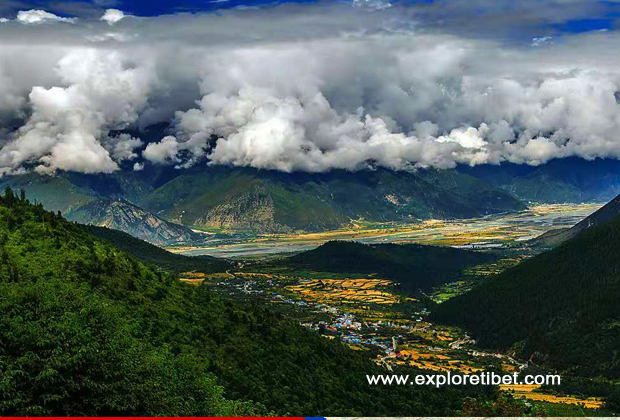
Tomb Of Tibetan Kings.
Local Cuisine and Accommodation Nearby
When visiting the Tomb of the Tibetan Kings, you’ll want to indulge in the rich flavors of local cuisine and find comfortable accommodations that enhance your experience of this historical site.
Local Cuisine
While exploring the area around the Tomb of the Tibetan Kings, be sure to sample some authentic Tibetan dishes. Here are a few recommendations:
-
Tibetan Noodle Soup (Thukpa): This hearty dish is a staple among locals. Made with hand-pulled noodles, seasonal vegetables, and your choice of meat or tofu, it’s perfect for warming up after a day of exploration. Look for local eateries in Shannan City, where you can enjoy a steaming bowl.
-
Momo (Dumplings): These Tibetan dumplings come stuffed with a variety of fillings, including meat, vegetables, or cheese. They are often served with a spicy dipping sauce. You can find delicious momos at street stalls or small family-run restaurants in the nearby towns.
-
Yak Butter Tea (Po Cha): A traditional drink, this unique tea combines brewed tea with yak butter and salt, providing a rich, creamy flavor that’s beloved by locals. It’s often enjoyed with tsampa, roasted barley flour, which can be found in many cafes around the area.
-
Tibetan Barley Beer (Chang): For a local beverage, try Chang, a traditional Tibetan barley beer. It’s lightly fermented and has a refreshing taste, making it a great accompaniment to your meal.
Accommodation
After a day of discovering the ancient tombs, you’ll want a comfortable place to rest. Here are a few accommodation options that cater to international travelers near the Tomb of the Tibetan Kings:
-
Shannan Hotel: Located in Shannan City, this hotel offers modern amenities while maintaining a touch of Tibetan culture. Guests can enjoy spacious rooms and a restaurant serving local cuisine. Its proximity to the tombs makes it an ideal base for exploration.
-
Tsedang Hotel: Situated about 30 kilometers from the tombs, Tsedang Hotel provides comfortable rooms with stunning views of the Yarlung Tsangpo River. The hotel has a restaurant that serves both Tibetan and Chinese dishes, ensuring a delightful dining experience after a day of sightseeing.
-
Zedang International Hotel: This upscale option in Zedang features well-appointed rooms and a range of facilities, including a fitness center and spa. The hotel’s restaurant offers a mix of Tibetan and international cuisine, catering to diverse palates.
-
Homestays: For a more immersive experience, consider staying in a local homestay. Many Tibetan families offer accommodations, giving you a chance to experience local hospitality and cuisine firsthand. This option not only supports the local community but also provides a unique glimpse into the daily lives of the Tibetan people.
Exploring the Tomb of the Tibetan Kings is a journey through history, and enjoying local cuisine and comfortable accommodations will make your visit even more memorable.
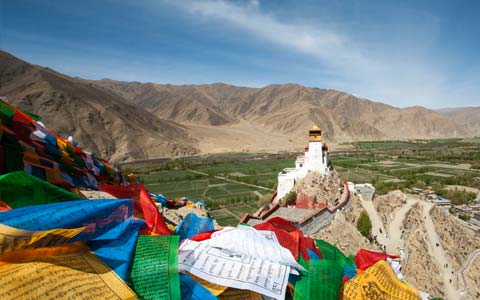
Tomb Of Tibetan Kings.
Frequently Asked Questions
Frequently Asked Questions
1. Where are the Tombs of the Tibetan Kings located?
The Tombs of the Tibetan Kings are situated southwest of Dzong Hill in Qonggyai County, Shannan Prefecture, approximately 30 kilometers south of Shannan City. This historical site is easily accessible from Lhasa, making it a convenient stop for travelers.
2. What are the opening hours and admission fees?
The tombs are open daily from 9:00 AM to 6:00 PM. The admission fee is CNY 40, which allows you to explore this fascinating historical site and its surrounding area.
3. How can I reach the Tombs of the Tibetan Kings?
Travelers can take a taxi from Shannan City, which takes about 40 minutes. Alternatively, consider renting a car or joining a guided tour to fully appreciate the journey and the historical context of the site.
4. When is the best time to visit the tombs?
The ideal time to visit the Tombs of the Tibetan Kings is during the summer months, from June to August, when temperatures are warm and rainfall is minimal. This makes for a more pleasant experience while exploring the site.
5. Are there any nearby attractions worth visiting?
Yes! In addition to the Tombs of the Tibetan Kings, nearby attractions include Samding Monastery, Riduo Hot Spring, Mindroling Monastery, and Dratang Monastery. These sites offer further insight into Tibetan culture and history.
6. What should I wear when visiting the tombs?
Dress in layers, as the weather can change quickly in Tibet. Comfortable walking shoes are essential for exploring the tombs and the surrounding area. Additionally, consider wearing a hat and sunscreen to protect yourself from the sun.
7. Is photography allowed at the site?
Yes, photography is permitted at the Tombs of the Tibetan Kings. The stunning landscapes and historical features provide excellent opportunities for capturing memorable images, so be sure to bring your camera!
8. Can I hire a guide to learn more about the tombs?
While there may not be designated guides at the tombs themselves, you can hire a local tour guide when arranging your trip. A knowledgeable guide can provide valuable insights into the history and significance of the tombs, enhancing your visit.
Final Thoughts on Your Trip
As your journey to the Tombs of the Tibetan Kings comes to an end, take a moment to reflect on the rich tapestry of history and culture woven into this sacred site. Standing amidst the ancient tombs, you feel the echoes of a bygone era—a time when great kings shaped the destiny of Tibet. The spectacular views, the serene surroundings, and the remarkable stories of the Tsampos and their legacies linger in your mind, offering a deeper understanding of Tibetan traditions and beliefs.
This extraordinary site is more than just a collection of mausoleums; it’s a testament to the resilience and spirit of a civilization that has withstood the tests of time. As you prepare to leave, carry with you the inspiration drawn from these hallowed grounds. Whether you’ve come seeking adventure, spiritual connection, or a glimpse into the past, the Tombs of the Tibetan Kings promise to leave an indelible mark on your heart and soul.
Embrace the memories made here, and let the stories of the kings inspire your own journey ahead. Until we meet again, safe travels, and may your adventures continue to be filled with wonder and discovery.